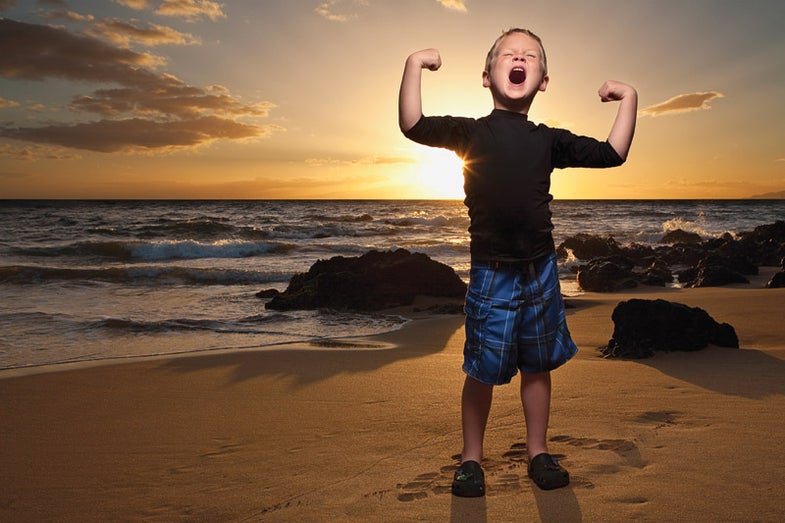Tips From a Pro: Balance Flash Output With a Setting Sun
Use two very different light sources for one incredible portrait

Living on the island of Maui in Hawaii, commercial and portrait photographer Eric Rolph (rolphphoto.com) has the rare luxury of choosing sea-swept sunrises or sunsets to use as backdrops. As you might imagine, he’s perfected the somewhat tricky art of balancing fore- and background lighting, where, without the aid of a little artificial fill light, his subjects would typically be much darker than the bright sun beyond.
His suggestions for how you can best strike this balance:
Warm up your fill flash. To help the cool color temperature of the foreground flash in this photo conform to the much warmer sunset, Rolph placed a Rosco CTO gel over the head of his Canon Speedlite 580EX II. But background color temperatures can change rapidly during sunset or sunrise, so he suggests shooting in RAW and fine-tuning color balance in conversion.
Soften your flash Rolph modified his direct flash output by popping it through a softbox-like Photek Softlighter umbrella, held aloft by a monopod serving as a makeshift boom.
Position camera and subject with care. Place your subject directly in front of the sun as a flag, and then move the camera in as close as possible (with the help of a wide-angle lens) until you’ve eliminated some or all of the flare.
Take care with exposure. “I’ve shot a lot of sunset photos with strobe and light modifiers, and find the best way is trial and error,” Rolph says. “I make an in-camera evaluative meter reading for the sunset background, take a picture, and then check the histogram to make sure my highlights aren’t too overblown. It may take an exposure or two.”
With that exposure set, Rolph has an assistant stand where the subject will be and hold the Speedlite at arm’s length. The flash is set to manual mode and fired by a wireless PocketWizard Plus II transceiver.
Rolph reviews the exposure of the self-lit assistant on the LCD, makes a flash adjustment and fires another test shot. “After two or three exposures, I usually have it dialed in,” he says. “It might be more efficient to use a light meter, but I’m a minimalist when it comes to taking gear into the field, especially when there’s salt air and sand present.”
As for working with children, Rolph recommends keeping the energy up. Here, he asked his subject, nephew Owen, to act out scenes involving his favorite cartoon hero. “High energy and positive reinforcement helps to keep the attention and interest of children,” says the photographer.

Kris holland/mafic studios (ILLUSTRATION)
To best light a foreground portrait subject against a setting (but still very bright) sun, Hawaiian photographer Eric Rolph put a Canon Speedlite 580EX II inside a 36-inch Photek Softlighter II umbrella-style softbox (A), and warmed up its output with a 1/4 Rosco CTO warming gel. His assistant suspended the Softlighter above the subject using a Manfrotto 680 monopod (B) as a boom. With everything ready, he posed the child to block the setting sun and photographed the scene with a Canon EOS 5D (C) and 17–40mm f/4L EF Canon zoom at its 35mm setting. He fired the flash with PocketWizard Plus II transceivers, for an overall exposure of 1/180 sec at f/13, ISO 100. In Adobe Photoshop CS5, he later whitened the sunlight to heighten contrast.